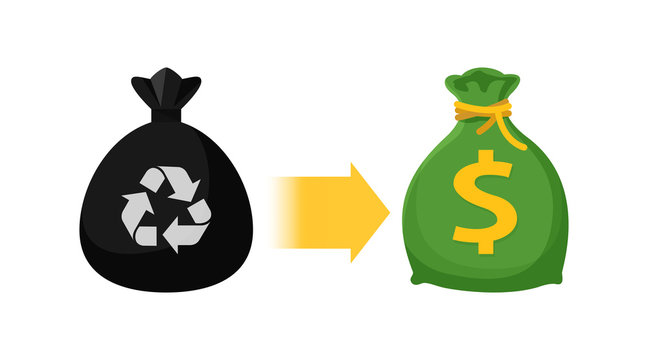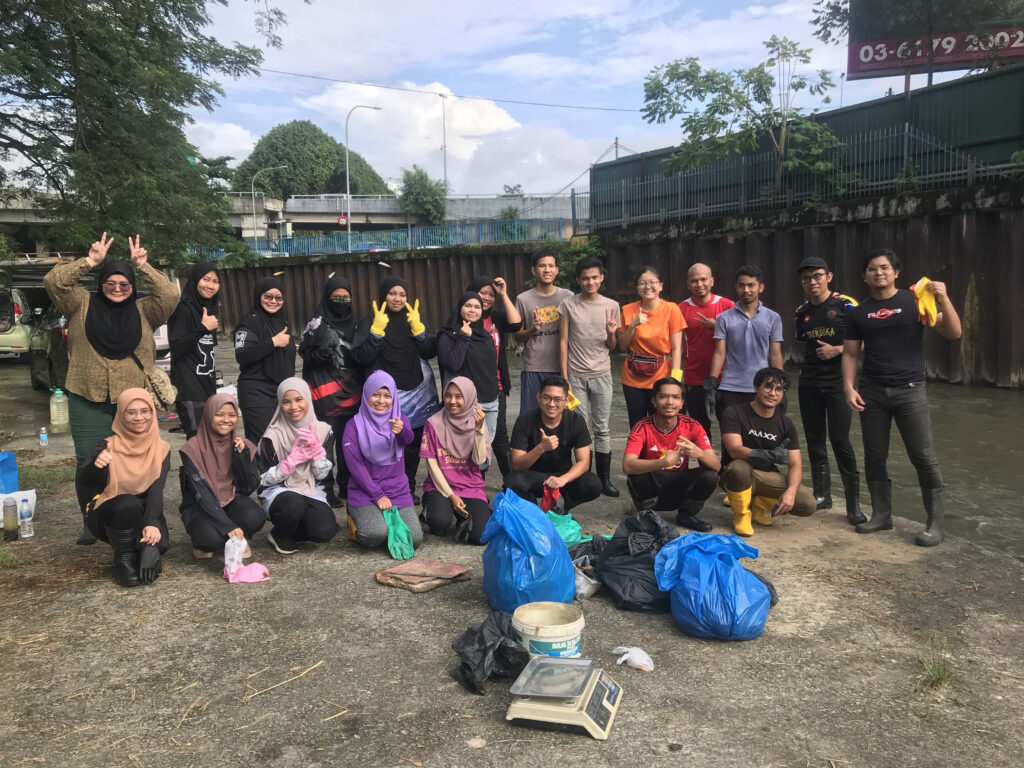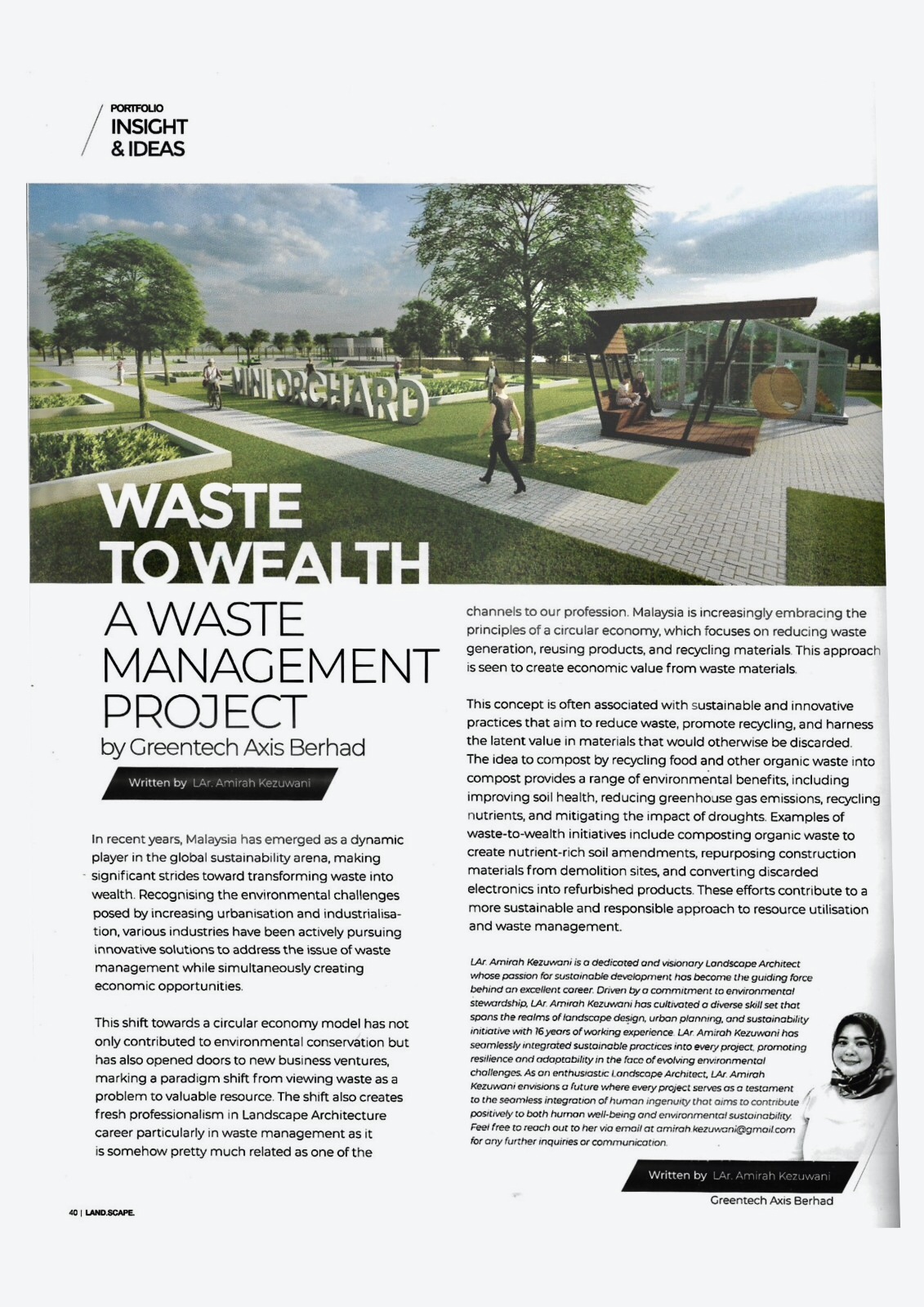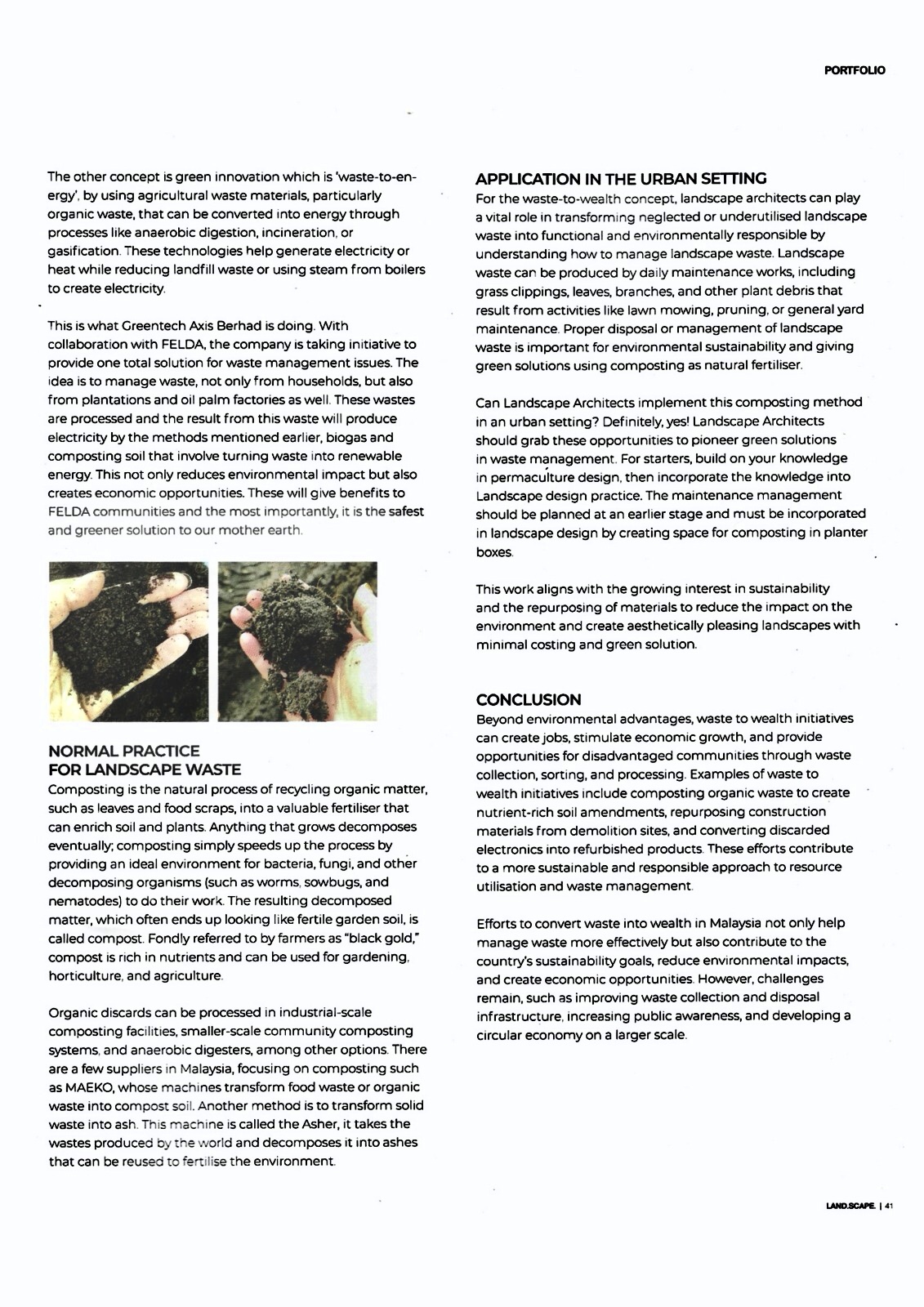
Waste to Wealth
A Waste Management Project in Malaysia
In recent years, Malaysia has emerged as a dynamic player in the global sustainability arena, making significant strides toward transforming waste into wealth. Recognizing the environmental challenges posed by increasing urbanisation and industrialization, various industries have been actively pursuing innovative solutions to address the issue of waste management while simultaneously creating economic opportunities.
This shift towards a circular economy model has not only contributed to environmental conservation but has also opened doors to new business ventures, marking a paradigm shift from viewing waste as a problem to an invaluable resource. Malaysia is increasingly embracing the principles of a circular economy, which focuses on reducing waste generation, reusing products, and recycling materials. This approach is seen as a way to create economic value from waste materials.
This concept is often associated with sustainable and innovative practices that aim to reduce waste, promote recycling, and harness the latent value in materials that would otherwise be discarded. The idea to compost by recycling food and other organic waste into compost provides a range of environmental benefits, including improving soil health, reducing greenhouse gas emissions, recycling nutrients, and mitigating the impact of droughts.
Upcycling
Several key aspects of the waste-to-wealth concept is upcycling. This activity includes recycling by collecting and processing materials like paper, plastic, glass, and metal to create new products. Another aspect is upcycling, which involves taking waste materials and transforming them into products of higher value or quality. This process often requires creativity and innovation, such as turning discarded clothing into stylish fashion items or repurposing old furniture.
The Assistant Coordinator of Sustainability, American University of Nigeria (AUN), the university has been teaching people how to turn waste to wealth. Known as Yola Eco-essential Programme, the project was initiated in 2012 by a former professor of the university, Charles Reith, to encourage people to recycle and turn wastes into finished products.
Many NGOs in Malaysia create Recycling Programs and establish recycling programs for various materials, such as paper, plastic, glass, and electronic waste. These programs aim to divert recyclable materials from landfills and promote the recycling industry, which can generate income and employment opportunities.
One of good example, led by an NGO known as HARA’s MAKER with collaboration MUSLIM VOLUNTEER MALAYSIA, calling for volunteer to collect waste from Sungai Keroh, Segambut weekly, the collection of waste later will be use for ‘Reimagine Plastic Project’.

HARA’S MAKERS : https://www.instagram.com/hara.makers?igsh=MW9zYmJwNms0Yjc0cA==
MVM : https://www.instagram.com/muslimvolunteermalaysia?igsh=d3NndHdzbnpoeDlx
Examples of waste-to-wealth initiatives include composting organic waste to create nutrient-rich soil amendments, repurposing construction materials from demolition sites, and converting discarded electronics into refurbished products. These efforts contribute to a more sustainable and responsible approach to resource utilisation and waste management.
Waste to Energy
The other concept is green innovation which is Waste-to-energy, by using agricultural waste materials, particularly organic waste, that can be converted into energy through processes like anaerobic digestion, incineration, or gasification. These technologies help generate electricity or heat while reducing landfill waste or using steam from boilers to create electricity.
Project by : Greentech Axis Berhad
Greentech Axis Berhad’s approach to waste management represents a holistic and forward-thinking solution that addresses a range of environmental and economic challenges. By collaborating with FELDA (Federal Land Development Authority), Greentech Axis extends its waste management expertise beyond typical urban waste streams to include waste from rural communities, plantations, and oil palm factories. This broad scope ensures a comprehensive strategy to tackle waste across diverse sectors.
Greentech Axis Berhad’s collaboration with FELDA for waste management is a fantastic example of turning waste into a sustainable solution. By focusing on waste from households, plantations, and oil palm factories, the initiative provides a comprehensive approach to waste management. The conversion of waste into electricity, biogas, and composting soil highlights the potential for turning waste into valuable products and renewable energy. This project not only helps reduce environmental impact but also generates economic opportunities for the FELDA communities, contributing to safer and greener solutions for the planet. It showcases a holistic and sustainable model for waste management, benefitting both the environment and local economies.
Zero Waste Approach
A Zero Waste strategy aims to divert all waste from landfills and incineration, focusing on the reduction, reuse, and recycling of materials. By transforming waste into valuable resources, Greentech Axis Berhad’s collaboration with FELDA contributes to this goal by ensuring that waste from various sectors (household, plantation, and industrial) is processed in an environmentally friendly manner. Through methods such as composting and biogas production, waste is converted into useful products like compost for agriculture and biogas for electricity generation. This approach significantly reduces the environmental burden of waste disposal and supports the move toward a zero-waste society.
Green Technology in Waste-to-Energy
Green Technology plays a pivotal role in the waste-to-energy process, where waste is transformed into renewable energy sources. Greentech Axis Berhad uses cutting-edge technology to harness waste materials and turn them into energy such as biogas. The conversion of organic waste into biogas not only provides a sustainable energy source but also helps reduce methane emissions from landfills, which are a major contributor to climate change. Additionally, the production of electricity from waste ensures a continuous and clean energy supply, reducing dependency on fossil fuels and promoting a sustainable energy future. The adoption of green technologies in waste-to-energy systems also supports economic development by creating jobs and offering new avenues for innovation in waste management.
The process begins with the collection of organic and industrial waste, which is then transformed through innovative methods. The first product of this transformation is electricity. By utilizing waste-to-energy technologies, Greentech Axis captures the energy stored in organic materials like food waste and agricultural by-products. This not only helps reduce reliance on traditional power sources but also contributes to the grid, providing a renewable energy source.
In addition to electricity, biogas is produced through the anaerobic digestion of organic waste. This biogas can be used as a clean fuel alternative for cooking, transportation, or electricity generation. It also significantly lowers methane emissions, a potent greenhouse gas often released from decomposing organic waste in landfills. By capturing and repurposing this methane, Greentech Axis not only reduces harmful emissions but also contributes to cleaner air and improved public health.
Composting soil is another crucial byproduct of this waste management solution. Organic waste is transformed into nutrient-rich compost, which can be used to enhance soil health, promote sustainable agriculture, and reduce the need for chemical fertilizers. This is especially beneficial for FELDA’s agricultural activities, as it supports a more sustainable farming approach and reduces the environmental footprint of farming practices.
Closed-Loop Smart Operations
The concept of Closed-Loop Smart Operations integrates digital technologies with waste management systems to create a more efficient, interconnected, and sustainable process. By utilizing sensors, smart monitoring systems, and data analytics, Greentech Axis Berhad ensures that the entire waste management process—from collection to conversion—is optimized for maximum efficiency and minimal waste. For instance, waste is tracked throughout its lifecycle to identify opportunities for further resource recovery, energy production, and waste minimization. The closed-loop system ensures that no waste goes to waste, and every product or byproduct is fully utilized, creating a more sustainable cycle. This type of operation not only reduces environmental impact but also enhances operational efficiency and cost-effectiveness.
Through this integrated waste management system, Greentech Axis not only addresses the pressing need to reduce waste and lower environmental impact but also generates valuable resources that fuel local economies. By turning waste into energy and useful products, this initiative creates economic opportunities for FELDA communities, helping to stimulate local economies, create jobs, and improve quality of life. Importantly, this solution supports a more sustainable, greener future for the environment and communities, aligning with global goals to reduce carbon emissions and preserve natural resources for future generations.
Economic and Environmental Benefits for FELDA Communities
Greentech Axis Berhad’s initiative directly benefits FELDA communities by creating economic opportunities through job creation, skills development, and new business opportunities in the waste-to-energy and recycling sectors. Furthermore, the environmental benefits of this program are far-reaching. By reducing the amount of waste sent to landfills and generating renewable energy, the program contributes to cleaner air, water, and soil, fostering healthier environments for local communities.
In summary, Greentech Axis Berhad’s approach exemplifies the intersection of green technology, sustainability, and economic development. By converting waste into valuable resources and renewable energy, the company offers a holistic solution that not only reduces environmental impact but also generates economic opportunities for the communities involved, while contributing to a safer and greener planet for future generations.
This model exemplifies how strategic partnerships and innovative technologies can transform waste management from a challenge into an opportunity, benefiting both the environment and local economies.
From Leaves to Wealth: The Ketapang Leaf Business Opportunity
Another great opportunity seen by Dr Mohd Zulariffin Md Maarof years ago who currently working at Universiti Tun Hussein Onn Malaysia as a science and mathematics department senior lecturer, has been making money by supplying dried ketapang (Terminalia catappa) leaves to the United States market for the past 10 years. Commonly known as Indian almond leaves, dried ketapang leaves are valued for their ability to lower the pH, or make the water more acidic, in aquariums to give their fish a longer life span. Besides that, ketapang leaves are said to have medicinal value, and are able to fight liver problems, diabetes, arthritis, stomach aches, headaches, other than reducing the risk of chronic diseases.
Normal practice for Landscape/Green Waste
In landscape practices, the management of waste, especially organic waste, is becoming increasingly important for sustainability. Some common methods of handling landscape waste include:
- Composting: This is a natural and eco-friendly way to recycle organic materials like leaves, grass clippings, and food scraps into compost. As mentioned, it creates “black gold” that improves soil health and supports plant growth. Large-scale composting facilities or community composting systems can process organic waste into high-quality compost, which is widely used in gardening, horticulture, and agriculture.
- Mulching: A simple practice where landscape waste such as grass clippings, leaves, and branches are shredded and used as mulch. Mulching helps retain soil moisture, suppress weeds, and improve soil structure as it decomposes.
- Anaerobic Digestion: This is a more advanced method where organic waste is processed in the absence of oxygen to produce biogas, which can be used as a renewable energy source. The leftover digestate can be used as compost or soil amendment.
- Waste-to-Ash Conversion: Using machines like the “Asher,” organic waste is converted into ash. This ash can be repurposed to fertilize soil. However, this method should be carefully managed to avoid environmental concerns, such as excessive alkalinity or heavy metal contamination in the ash.
These methods not only reduce waste but also contribute to soil improvement and reduce the need for synthetic fertilizers, aligning with sustainable landscape practices. For more efficient implementation in urban or residential landscapes, specialized machines and technologies, such as those from MAEKO, are being used to make composting easier and more accessible.
MAEKO : https://www.maeko.com.my/
THE ASHER : https://www.the-asher.com/EN/home
Reviving Soil with Compost: A Sustainable Approach to Waste Management
Reviving soil with compost is an essential practice in sustainable waste management, especially in urban and agricultural settings. By transforming green waste, such as grass clippings, leaves, and food scraps, into rich, fertile soil, composting reduces the amount of organic waste sent to landfills, helps mitigate climate change by sequestering carbon, and supports healthy soil ecosystems.
In composting, microorganisms break down organic materials, turning them into humus, a nutrient-rich substance that improves soil structure, moisture retention, and nutrient content. This process not only replenishes essential elements like nitrogen, phosphorus, and potassium but also boosts microbial biodiversity in the soil, which is vital for plant growth.
Farmers and gardeners have long valued compost for its ability to enhance soil fertility, promote plant health, and reduce the need for chemical fertilizers. As the demand for organic farming and sustainable landscaping practices increases, composting becomes even more crucial. The practice supports sustainable waste management by diverting organic waste from landfills, reducing methane emissions, and transforming waste into a valuable resource.

Composting Green Waste: A Key to Rich, Productive Soil
Composting is the natural process of recycling organic matter, such as leaves and food scraps, into a valuable fertiliser that can enrich soil and plants. Anything that grows decomposes eventually; composting simply speeds up the process by providing an ideal environment for bacteria, fungi, and other decomposing organisms (such as worms, sowbugs, and nematodes) to do their work. The resulting decomposed matter, which often ends up looking like fertile garden soil, is called compost. Fondly referred to by farmers as “black gold,” compost is rich in nutrients and can be used for gardening, horticulture, and agriculture. Organic discards can be processed in industrial-scale composting facilities, smaller-scale community composting systems, and anaerobic digesters, among other options.
Composting can be done at various scales, from small backyard composting bins to large industrial composting facilities. In larger facilities, composting is often managed using advanced systems like aerobic composting and anaerobic digesters, which can process large quantities of organic waste more efficiently.

Apply in the urban setting
For the Waste-to-wealth concept, landscape architects can play a vital role in transforming neglected or underutilised landscape waste into functional and environmentally responsible by understanding how to manage landscape waste. Landscape waste can be produced by daily maintenance works, including grass clippings, leaves, branches, and other plant debris that result from activities like lawn mowing, pruning, or general yard maintenance. Proper disposal or management of landscape waste is important for environmental sustainability and giving green solutions using composting as natural fertiliser.
Applying composting methods in urban settings can be a valuable strategy for sustainable urban landscape design.
Can Landscape Architects in Malaysia implement this composting method in an urban setting?
Definitely Yes!
Landscape Architects should grab these opportunities to pioneer green solutions in waste management. For starters , build on your knowledge in permaculture design, then incorporate the knowledge into Landscape design practice. The maintenance management should be planned at an earlier stage and must be incorporated in landscape design by creating space for composting in planter boxes.
Here’s how Landscape Architects can approach this:
- Permaculture Knowledge: As mentioned, a deep understanding of permaculture principles is key. Permaculture focuses on creating self-sustaining systems, which aligns well with composting, helping to recycle organic waste into useful products for the landscape.
- Incorporating Composting into Design: Plan for composting spaces early in the design process. This could involve integrating composting areas into public parks, rooftop gardens, or even small-scale private gardens. Ensure that these spaces are functional, aesthetically pleasing, and easy to maintain.
- Planter Boxes and Green Infrastructure: Design composting systems within planter boxes, raised beds, or urban farm plots. This is especially useful in small spaces or urban environments, where space may be limited. You could also incorporate composting systems like vermiculture (worm composting) or bokashi (fermentation-based composting) for different settings.
- Maintenance Considerations: Urban composting systems require clear planning for ongoing maintenance. The landscape design should provide easy access for waste collection, compost turning, and monitoring the health of the composting systems. Regular compost maintenance can be included in the overall landscape management plan.
- Community Engagement: In an urban setting, community involvement is crucial. Educate local communities on how to properly use the composting facilities, and encourage collaboration between residents or businesses in managing organic waste.
Incorporating composting into urban landscape designs not only contributes to waste reduction but also helps create more sustainable and livable urban environments, aligning with current trends towards eco-friendly and resilient city planning.
In urban areas, challenges like limited space and the need for efficient waste management make this approach particularly valuable. Designing areas specifically for composting, such as planter boxes or designated composting zones, can encourage the use of organic waste for enriching the landscape. This not only reduces landfill waste but also fosters a circular economy where waste becomes a resource for the landscape. By incorporating these systems not only contributes to a more sustainable waste management approach but also enhances the biodiversity of urban spaces, creates opportunities for local food production, and reduces the carbon footprint of transporting waste to landfills.
Urban Composting Strategies:
- Community Composting: Partner with local communities to set up shared composting facilities. This can be managed in public parks or unused lots, where organic waste from households or nearby businesses is collected, composted, and then used for landscaping purposes.
- Green Waste Collection: Encourage businesses and residents to separate green waste (like grass clippings, leaves, and plant trimmings) from other types of waste, and provide designated collection points in the neighborhood for easy composting.
- Rooftop Gardens: Urban rooftops are great for composting, especially in cities with limited garden space. Use rooftop garden systems to create composting bins for organic waste.
- Composting Stations in Public Parks: Create composting bins in public spaces or parks to recycle organic waste, where collected compost can later be used to nourish the park’s plants and trees.
- Green Infrastructure Projects: Integrate composting into green infrastructure, such as rain gardens or green roofs, to create a more sustainable urban ecosystem.
For landscape architects, taking the lead in these initiatives is a powerful way to shape healthier, more resilient urban environments. Moreover, planning for the long-term maintenance of these composting systems is essential. Incorporating easy-to-manage composting setups into the early stages of the design ensures that they remain functional and accessible.
TIPS : Composting in Planter Box Using In-Ground Pipe
Using an in-ground pipe system for composting in a planter box is an efficient way to recycle organic waste and create nutrient-rich soil.
Materials:
- PVC or perforated pipe (about 4-6 inches in diameter)
- Planter box (with drainage holes)
- Compostable organic waste (vegetable scraps, yard waste, etc.)
- Soil or potting mix
Steps:
- Prepare the Planter Box:
- Ensure that the planter box has adequate drainage holes at the bottom. This is essential for preventing waterlogging and providing proper aeration for the compost.
- Install the In-Ground Pipe:
- Drill a hole in the center of the planter box’s base or along its side, depending on where you want to install the pipe.
- Insert the perforated PVC pipe vertically or horizontally through the hole. The pipe should be long enough to extend from the base of the box up to a few inches below the topsoil level. Perforated pipes allow air and moisture to circulate within the composting material, speeding up the breakdown process.
- Add Composting Material:
- Begin by layering a mix of brown and green organic materials in the planter box. Brown materials include dry leaves, cardboard, or wood chips, while green materials include vegetable scraps, grass clippings, or coffee grounds.
- Place the compostable waste directly on top of the perforated pipe, allowing air to flow through the materials for better decomposition.
- Maintain the Compost:
- Stir the compost regularly using a garden fork or a small shovel to ensure proper aeration and prevent any odor buildup.
- Add moisture as needed. The compost pile should be moist but not too wet.
- As the compost decomposes, the materials will break down into rich, fertile soil that can be used to support plant growth in the box.
- Use the Finished Compost:
- After a few months, you should have nutrient-rich compost ready to be mixed with the surrounding soil. This can be used to nourish the plants in the planter box, closing the loop on organic waste.
This work aligns with the growing interest in sustainability and the repurposing of materials to reduce the impact on the environment and create aesthetically pleasing landscapes with minimal costing and green solution.
Conclusion for Waste to Wealth initiatives
Beyond environmental advantages, waste to wealth initiatives can create jobs, stimulate economic growth, and provide opportunities for disadvantaged communities through waste collection, sorting, and processing. Examples of waste to wealth initiatives include composting organic waste to create nutrient-rich soil amendments, repurposing construction materials from demolition sites, and converting discarded electronics into refurbished products. These efforts contribute to a more sustainable and responsible approach to resource utilisation and waste management.
Efforts to convert waste into wealth in Malaysia not only help manage waste more effectively but also contribute to the country’s sustainability goals, reduce environmental impacts, and create economic opportunities. However, challenges remain, such as improving waste collection and disposal infrastructure, increasing public awareness, and developing a circular economy on a larger scale.


This article is issued in LAND.SCAPE. 05/2024 SEPTEMBER 2024
https://www.ilamalaysia.org/landscape